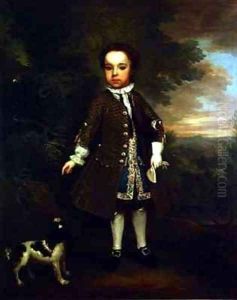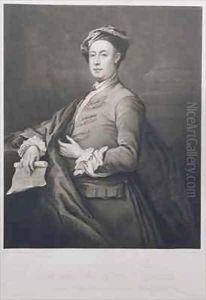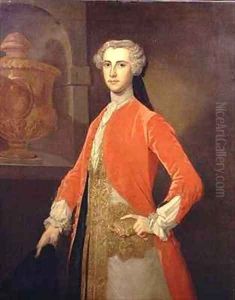Bartholomew Dandrige Paintings
Bartholomew Dandrige was a British portrait painter who was active in the early to mid-18th century. Born in 1691, Dandrige is primarily known for his work during the Georgian era, a period that saw a flourishing of British art and culture. While Dandrige may not be as widely recognized as some of his contemporaries like William Hogarth or Joshua Reynolds, his contributions to portrait painting in Britain during his time were significant.
Dandrige's early life and training are not extensively documented, but it is known that he established himself as a portraitist in London. He was adept at capturing the likeness and character of his sitters, which ranged from the nobility to the emerging middle class. Dandrige often painted his subjects with a certain grace and elegance, reflecting the tastes and aspirations of the period.
Throughout his career, Dandrige exhibited a keen ability to adapt to the artistic trends of the day, while also maintaining a distinct personal style. His portraits are characterized by a softness of form and a warm, yet restrained, color palette. He was particularly skilled in his use of light and shadow to create depth and dimension in his works.
Dandrige's clientele included many prominent figures of the time, which allowed him to maintain a successful practice. Unfortunately, unlike some of his peers, Dandrige did not leave behind a large body of writings or a strong personal narrative, so much of what is known about him comes from the study of his paintings and the records of his commissions.
Bartholomew Dandrige's death in 1755 marked the end of an accomplished career. Although he may not be as well-remembered as some of his peers, his paintings continue to be appreciated for their craftsmanship and elegance. His works can be found in art collections and museums, serving as a testament to his skill and the artistic legacy of the Georgian era.


